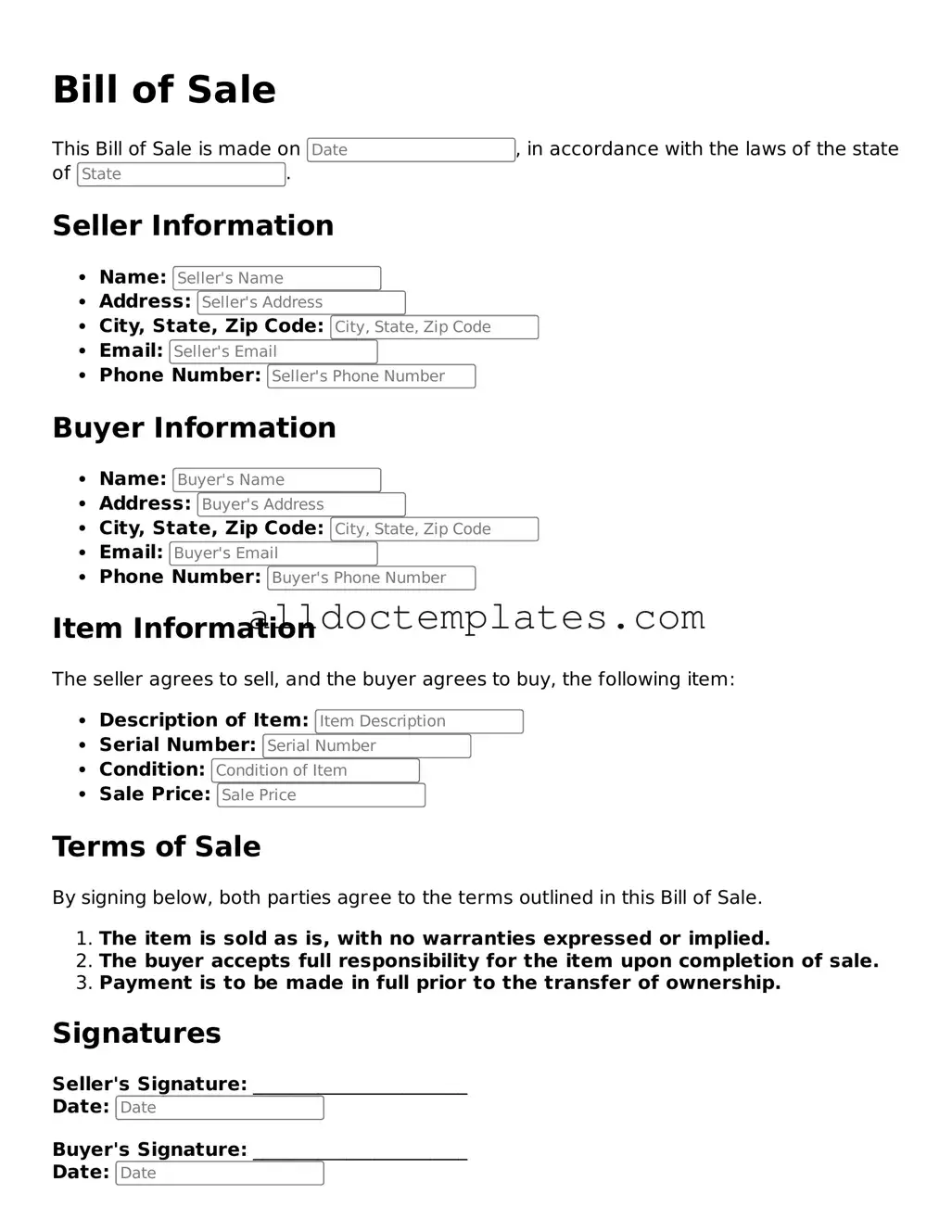Valid Bill of Sale Template
A Bill of Sale is a legal document that serves as proof of the transfer of ownership of an item from one person to another. This form typically includes details about the buyer, seller, and the item being sold, ensuring that both parties have a clear record of the transaction. Understanding the importance of this document can help protect both buyers and sellers during the exchange of goods.
Get Your Form Now
